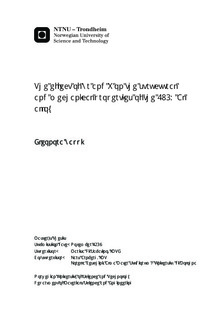| dc.description.abstract | During the last decades, the use of aluminium components for automotive applications has continuously increased. The main reason for this success is the high strength-to-weight ratio which characterizes these alloys, and which allows to reduce the vehicles weight. In fact, weight reduction is critically important to meet the strict regulations concerning fuel-economy and reduction of exhaust gas emissions.
In order to take more advantage of the benefits brought by weight reduction, the trend is to use aluminium alloys even for critical component, such as cylinder blocks and pistons. These components, however, operate at elevated temperatures, and the demand for high-performance engines is raising these temperatures even more.
This situation represents an issue for the use of aluminium alloys for engine components. Heat treated aluminium alloys are subjected to a decrease in their mechanical properties after exposure at elevated temperature, this decrease being faster when temperature is higher. This problem has been extensively studied, and many developments in high temperature mechanical properties of aluminium alloys have been achieved. Nevertheless, at the moment there are no aluminium alloys that could be used at temperature higher than 300 °C, as required by latest developments in modern engines. A further improvement, however, seems possible: additions of small amounts of transition metals (in particular Sc, Zr, Ti and V) have the potential to enhance the thermal stability of aluminium alloys.
The experimental work of this thesis investigated an Al-Cu-Mg-Si-Fe-Ni aluminium alloys used for the production of forged pistons for high-performance engine, namely AA 2618.
In the first part of the work, the heat treatment of AA 2618 was optimized in order to achieve high mechanical properties. It was found that the optimum condition is achieved when ageing treatment is carried out at 200 °C for 20 h. Then, the thermal stability of peak-aged AA 2618 was examined, for exposure temperatures in the range 200-305 °C, and tensile tests were carried out after high temperature exposure. As expected, tensile tests confirmed that UTS and YS both decrease with decreasing the residual hardness, while ductility increases in the opposite direction. SEM micrographs showed that the coarsening of the precipitate phase during thermal exposure and the consequent appearance of PFZ are responsible for the decrease in mechanical properties.
The experimental work concerning AA 2618 clearly showed that this alloy, in T6 condition, presents a suitable thermal stability for temperatures up to 230 °C, but when exposed at higher temperatures the decrease in hardness is quite fast. As a consequence, despite AA 2618 can be used at higher temperatures than the majority of other commercial aluminium alloys, its thermal stability is not high enough for applications in modern high-performance engines.
In order to overcome this problem, the second part of the work is concerned with addition of Zr and V. Two modified alloys were produced, one containing a higher Zr amount compared to the base material, and another containing a small amount of V in addition to the higher content of Zr. This preliminary investigation mainly dealt with the production of the modified alloys, the plastic deformation of the material in order to simulate the hot forging industrial process, and a microstructural investigation. | |

